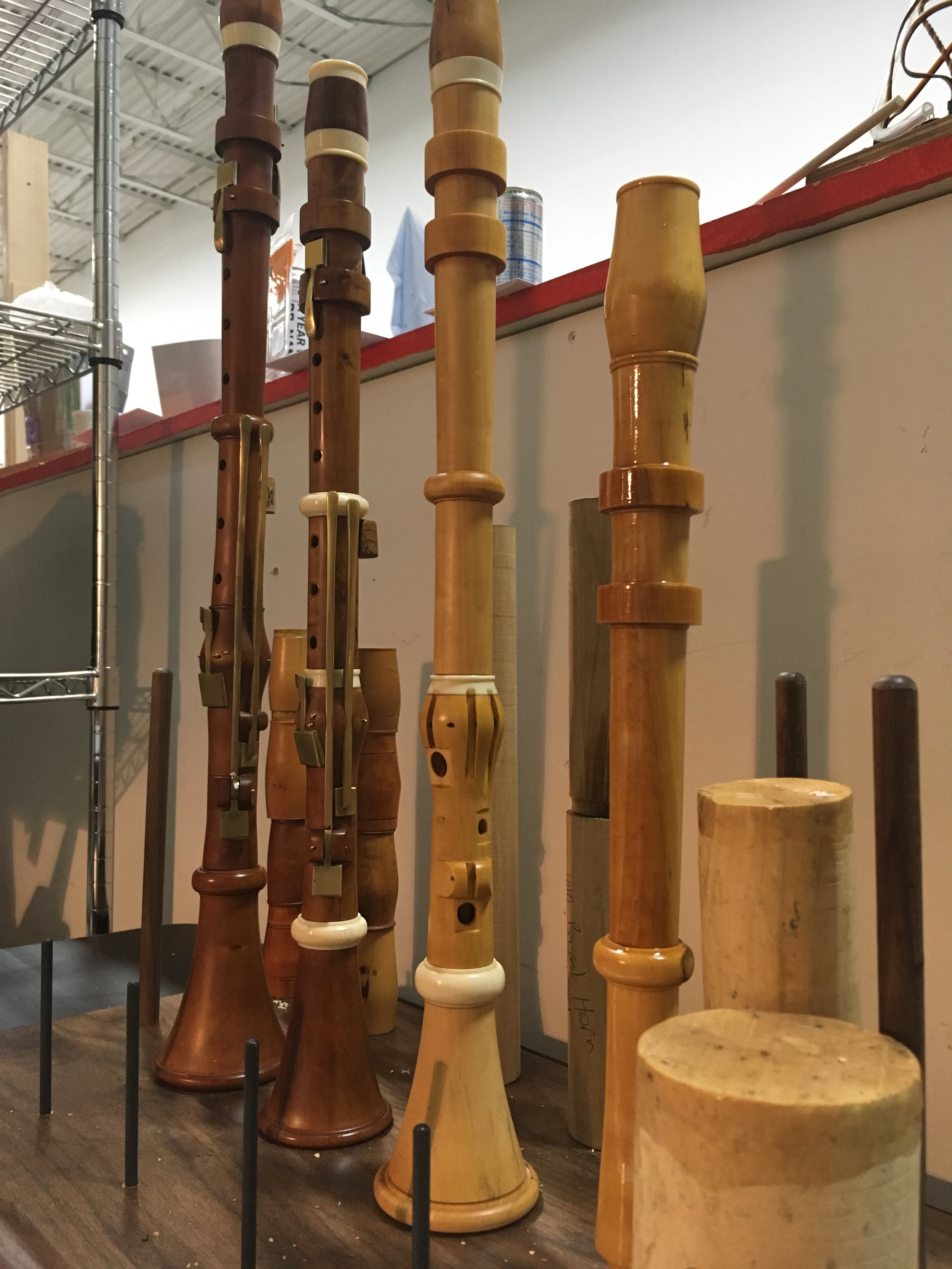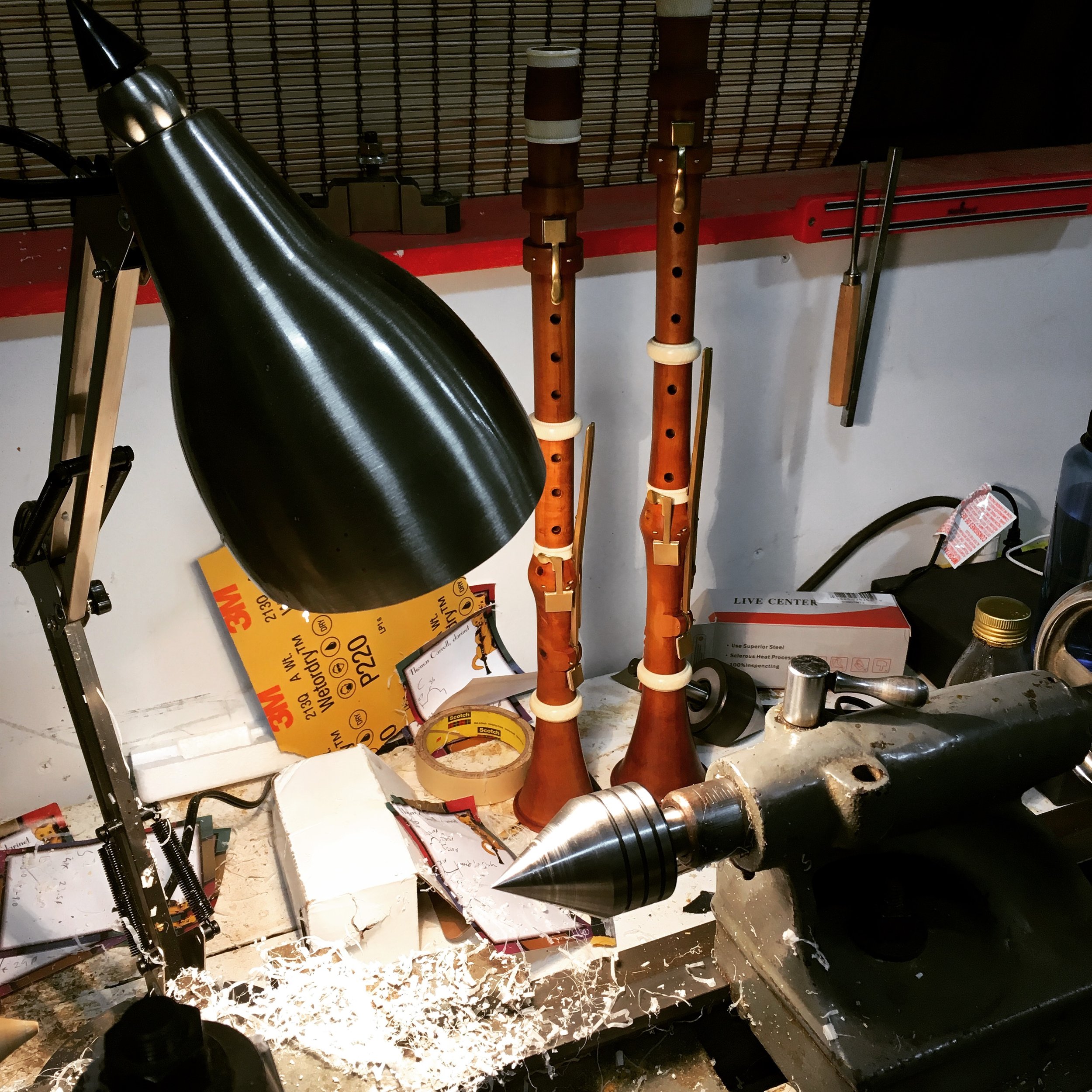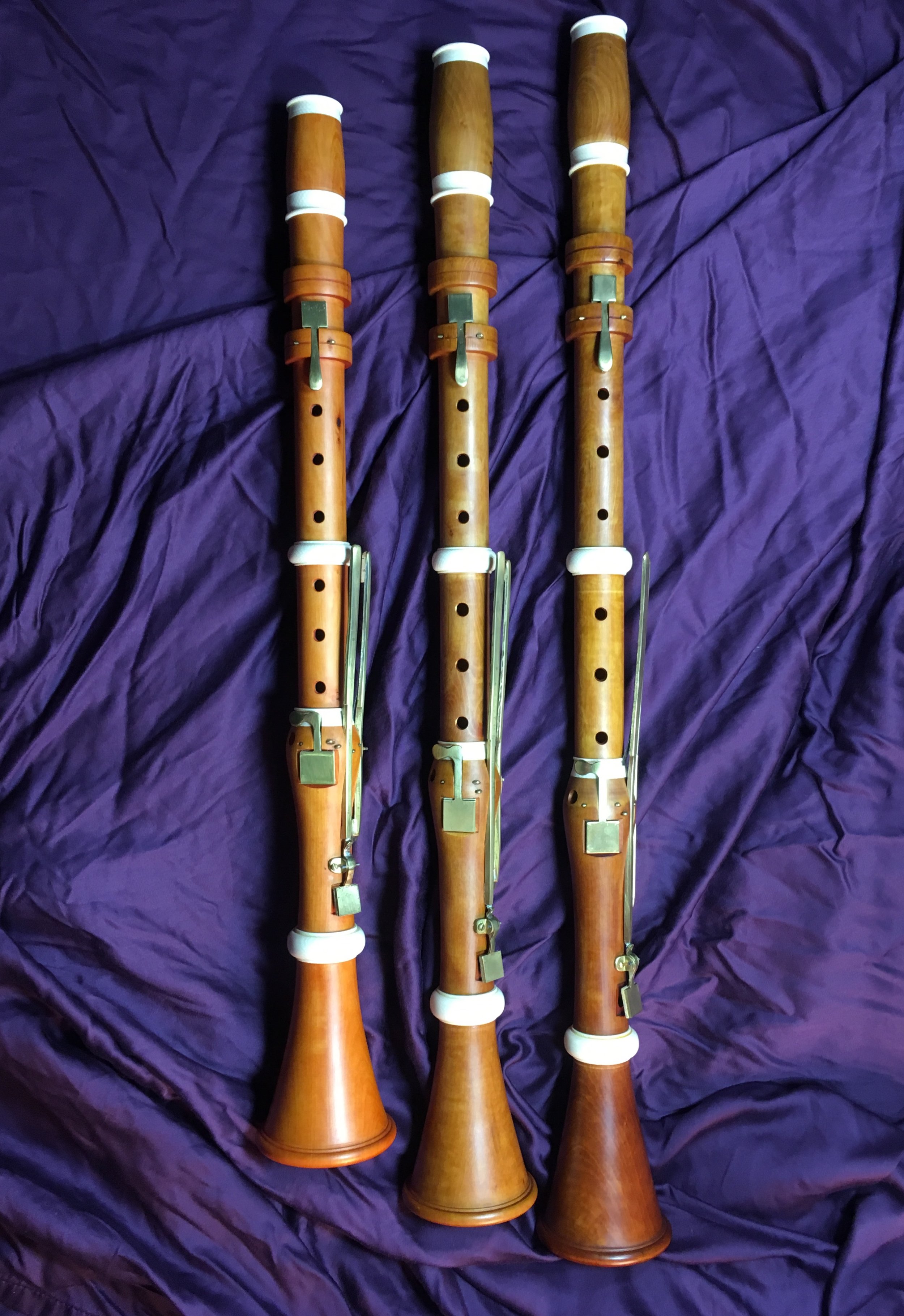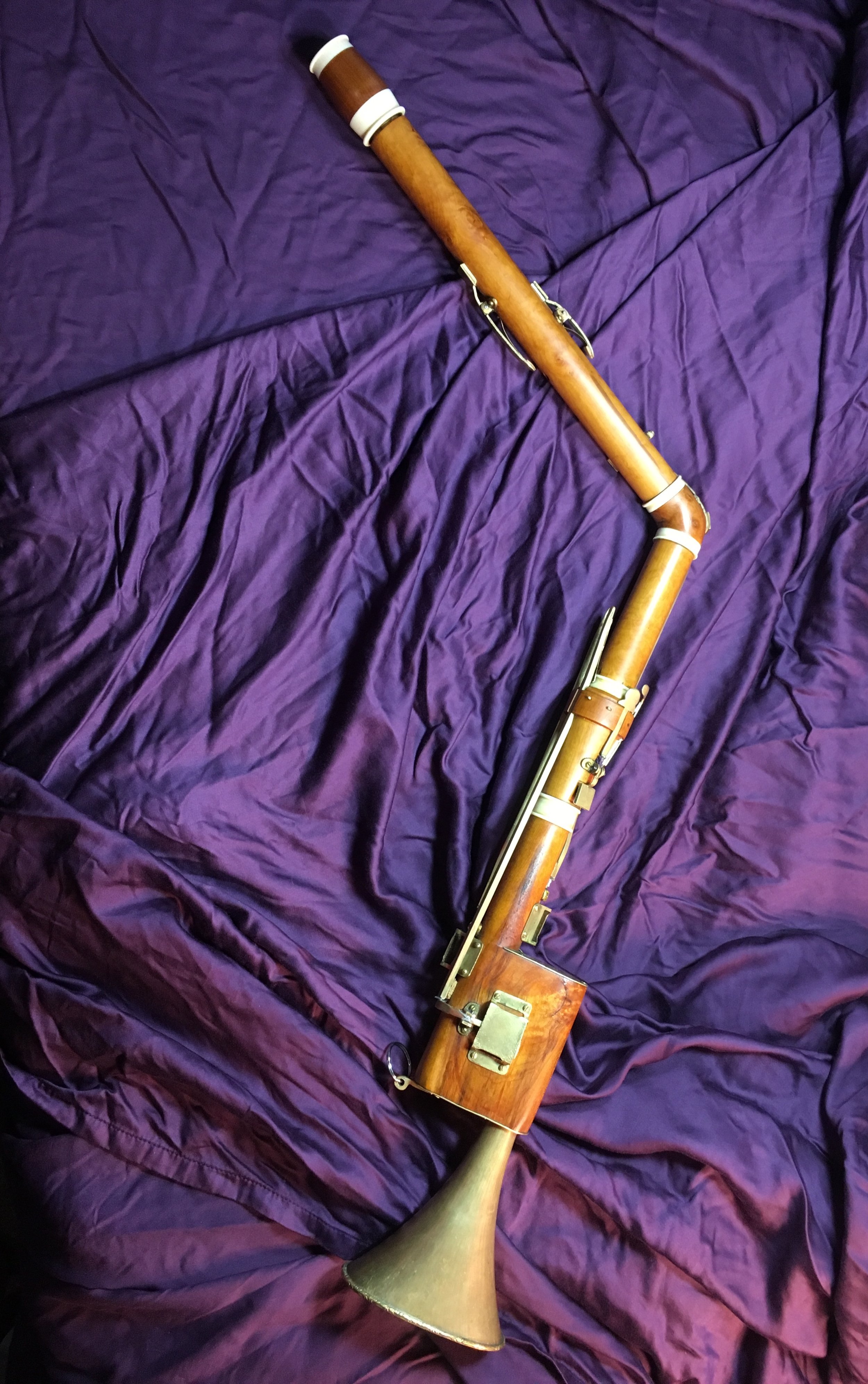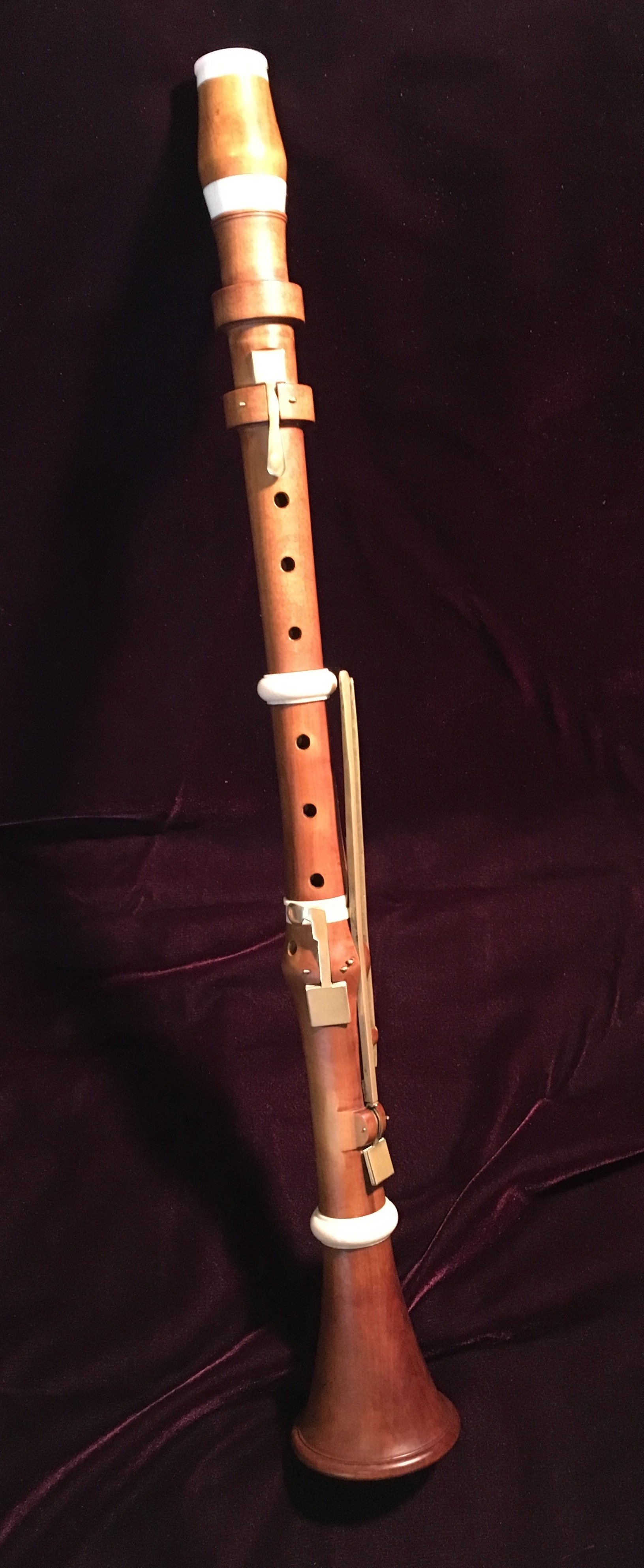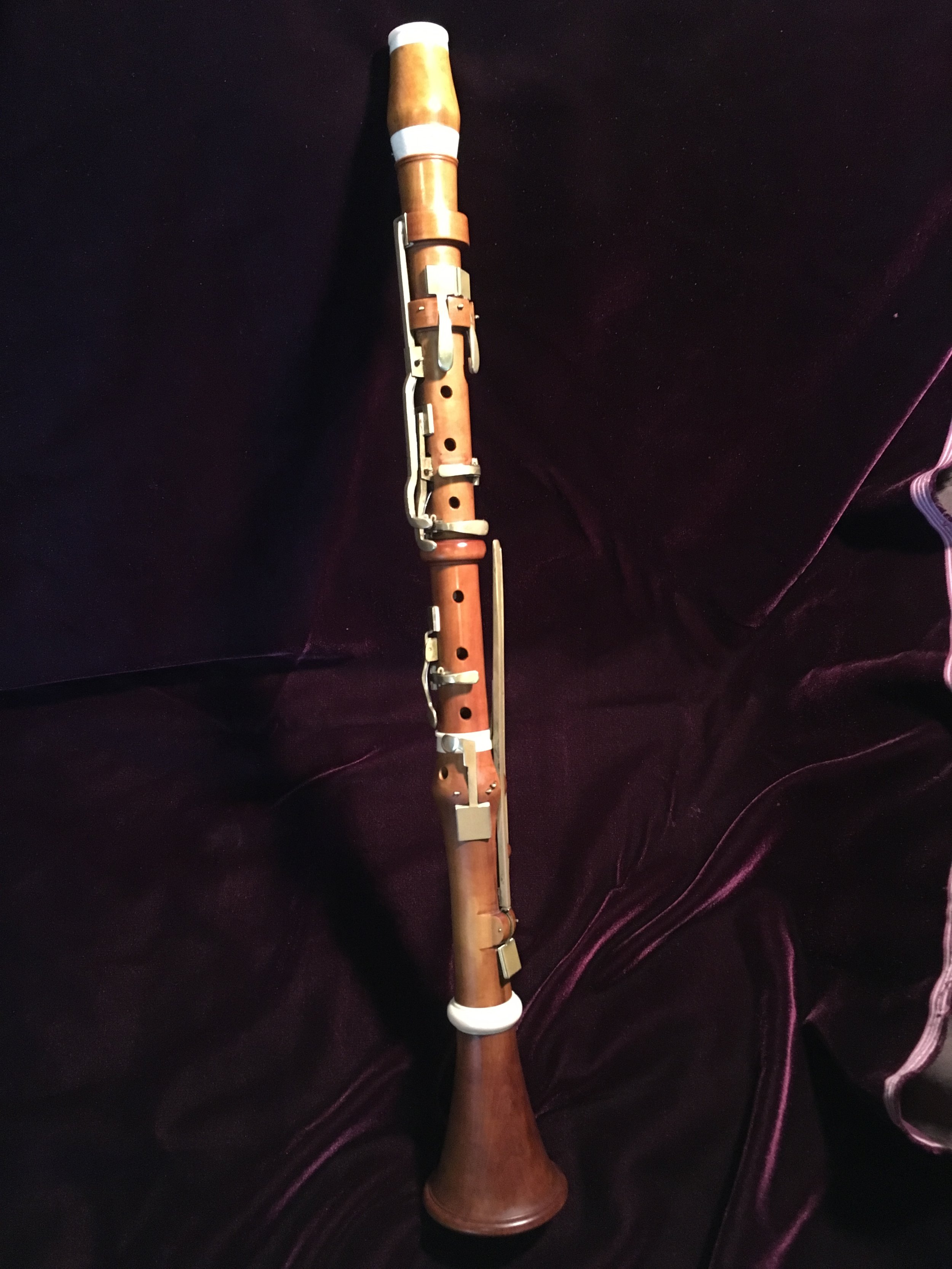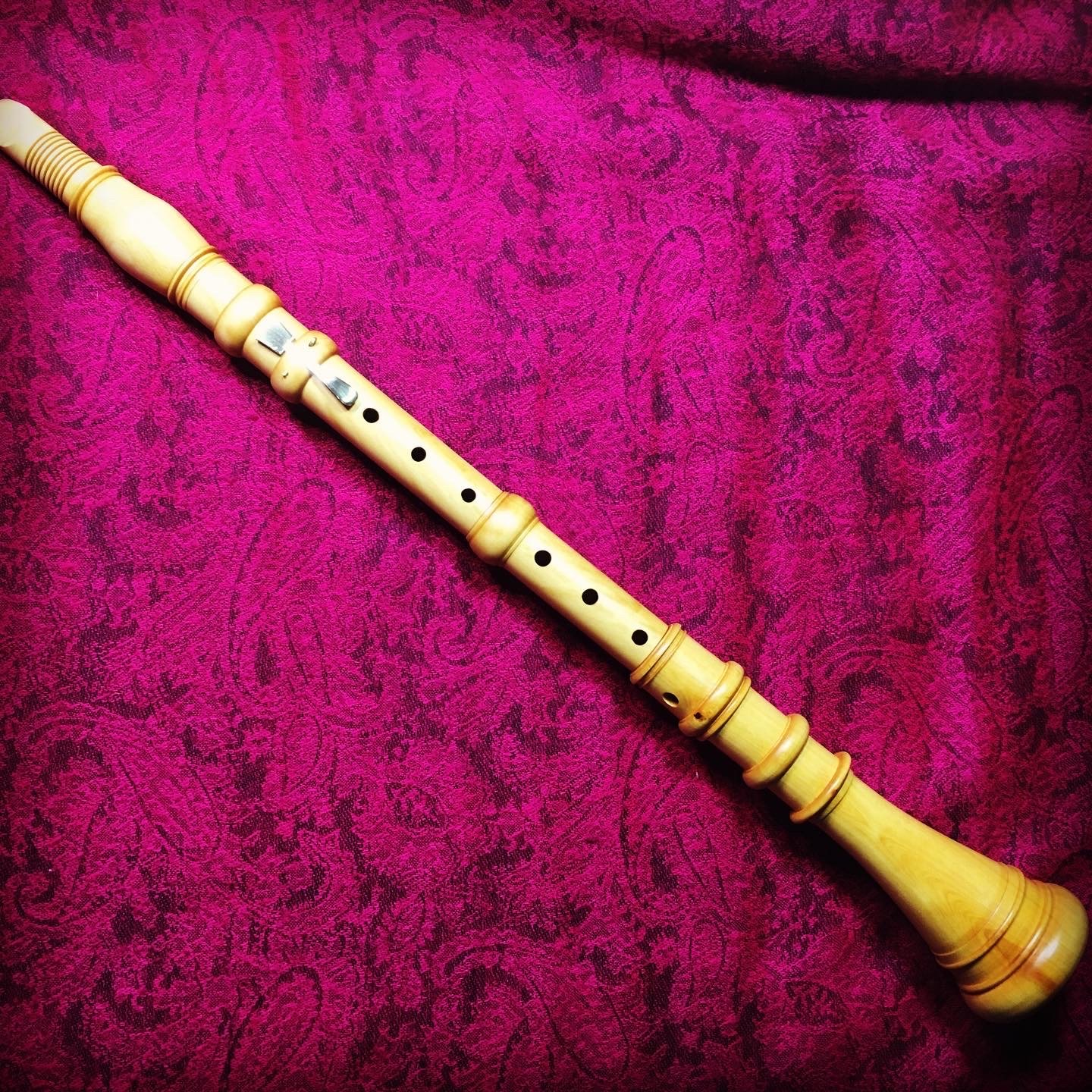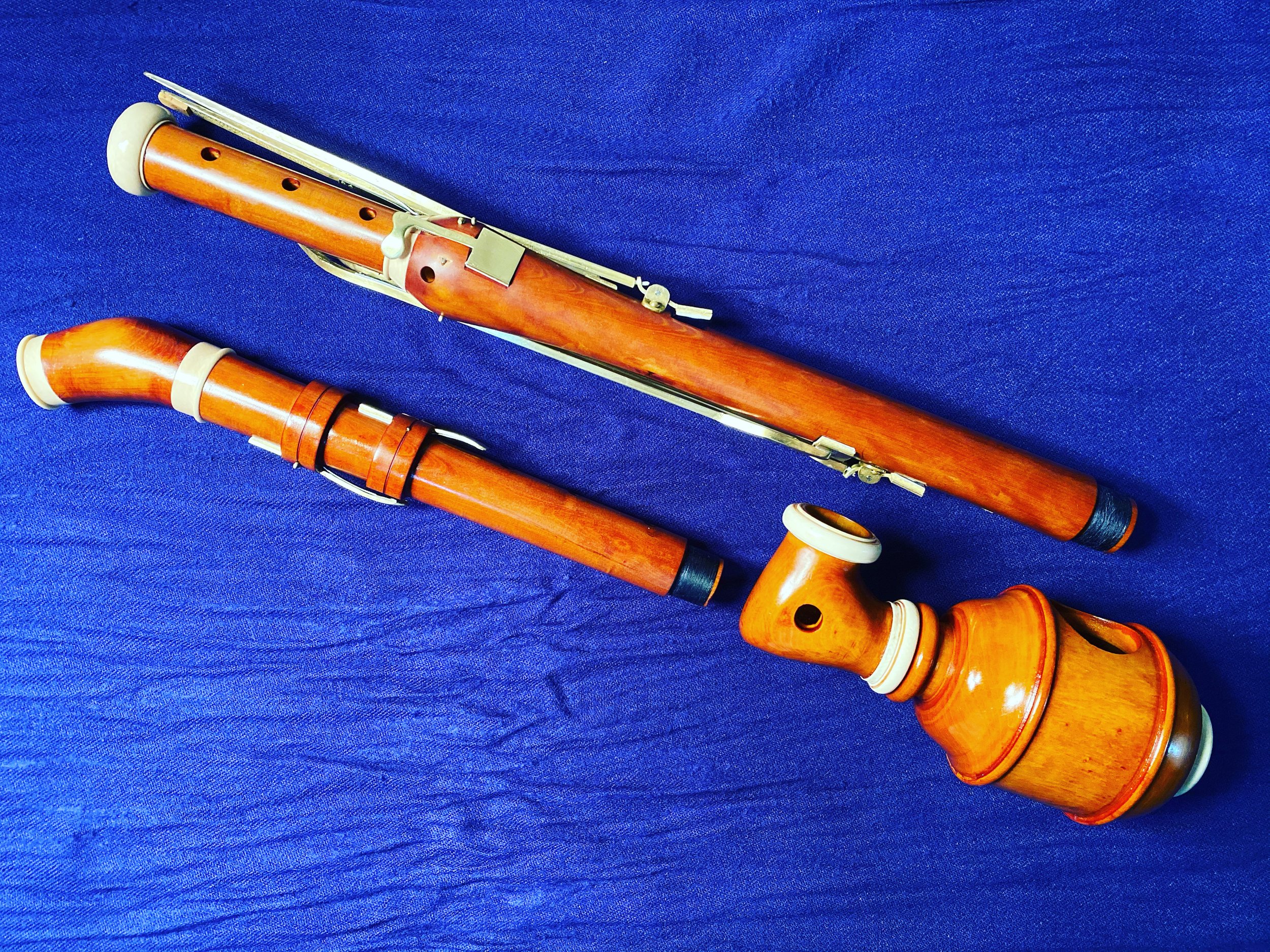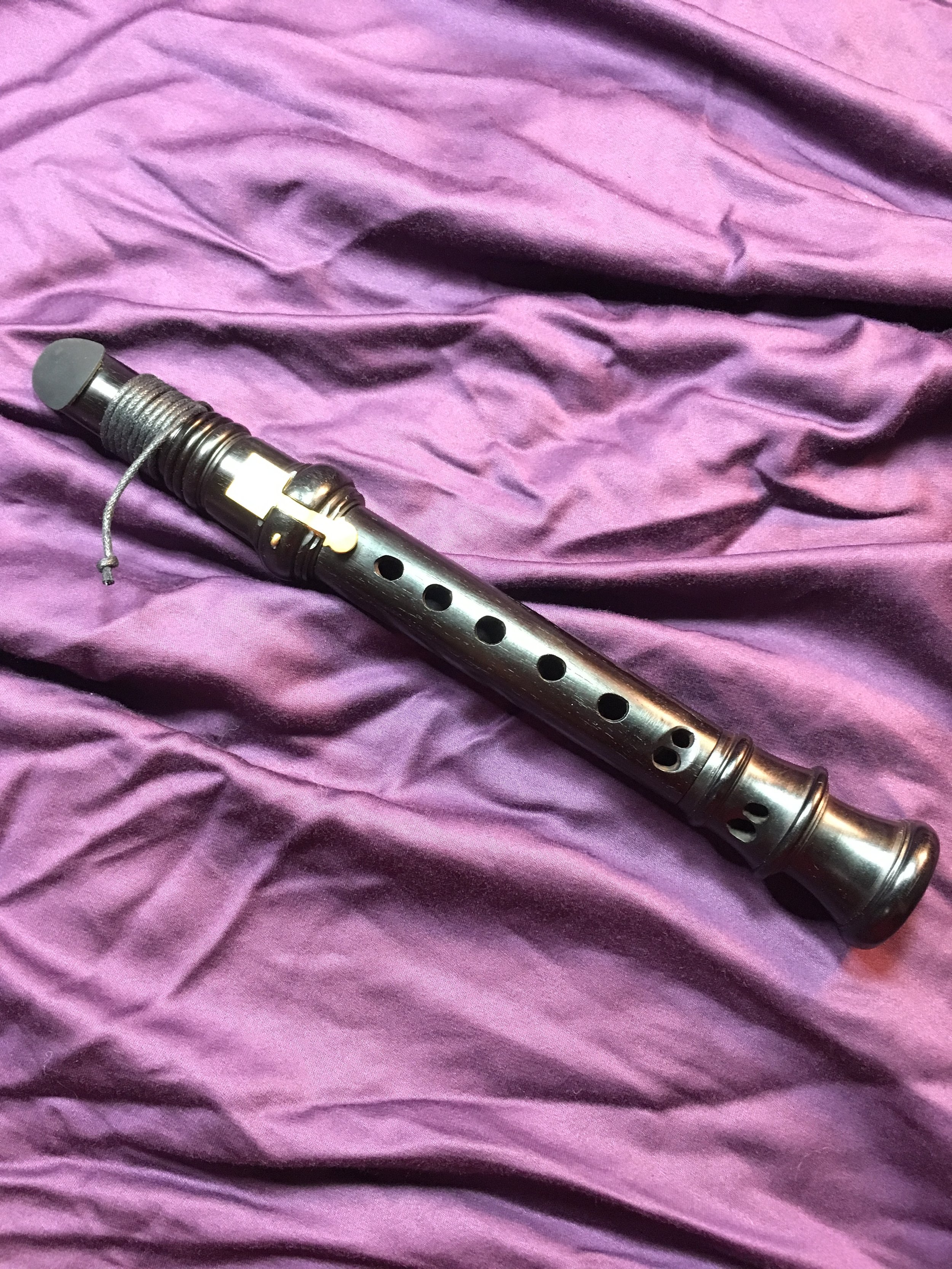Instruments
Exterior turning on a Grenser top joint
My instruments begin their life as billets of boxwood, grenadilla, and maple. The billets are seasoned and aged appropriately without the use of kiln drying, then bored and turned on the lathe. I use measurements of exemplary surviving original instruments whenever possible, though in the case of some makers such as Theodor Lotz, some creative math has to be employed. Ferrules of ivory (or a synthetic replacement) are added when appropriate.
August Grenser Bb clarinet joints resting in oil before final reaming
Following the initial boring and exterior turning, the wood is allowed to rest in an oil solution to stabilize the body of the instrument. Constriction of the bore is corrected with repeated re-reaming and burnishing to ensure smoothness. Keys are handmade out of brass, fit to the instrument, polished, and adjusted. When the instrument is reassembled, tuning and voicing takes place.
My clarinets are based on the most common instrument schools required for the standard repertoire of the 18th and 19th centuries. Clarinets with 5 keys after the surviving Geneva Lotz Bb clarinet form the basis for my Viennese instruments, whereas numerous surviving instruments by August and Heinrich Grenser form the basis for copies of 19th century German clarinets with 5-12 keys. Basset horns are patterned after instruments by Lotz and Grenser. My “Mozart” basset clarinet is based on the 1794 “Riga Drawing” using extrapolated dimensions calculated using the Geneva Lotz as a starting point with additional considerations given to contemporary Viennese A clarinets by makers such as Raymund Griesbacher and Kaspar Tauber.
"Denner" soprano chalumeau after exterior turning with interchangeable body joints for A415 and A430
Chalumeaux are modeled after the J.C. Denner instrument and scaled up or down to form a complete consort of soprano, alto, tenor, and bass instruments, and can be made of a variety of hardwoods including grenadilla, various rosewoods, and pear wood in addition to the traditional boxwood. I am currently in the design stages of a “basson de chalumeau” instrument based on a surviving example in Salzburg. Baroque clarinets in C and D with two keys are modeled after surviving originals by Denner and Scherer, though a 3-key extension can be built for use in more technical later repertoire such as the six Molter Concerti.
For information on instrument care, maintenance, reed suggestions, and more, please visit the Instrument Care page.
Please contact me at lotzofgrenser@gmail.com to discuss your historical clarinet requirements.



